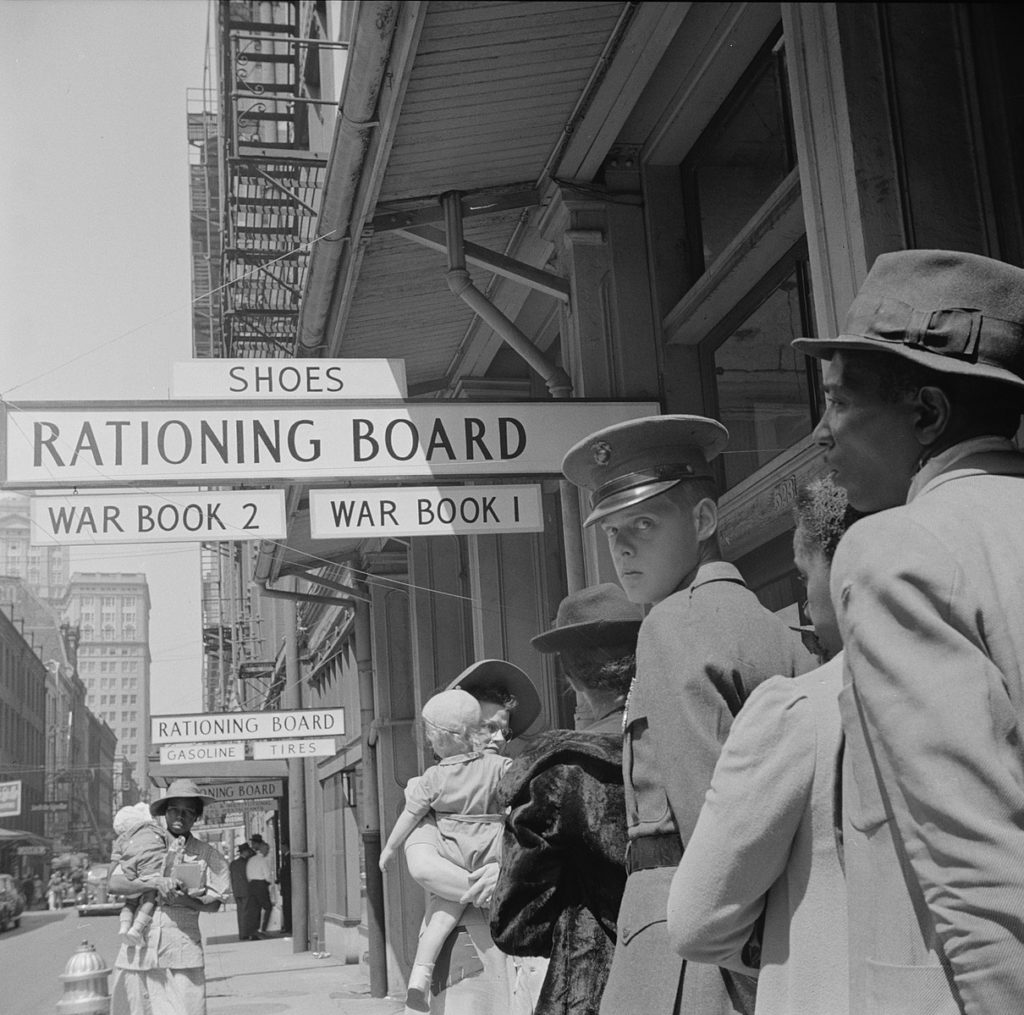On a December night in 1941, the American people were sitting in their homes listening to the radio and getting ready for a regular winter night when the horrifying news hit their radios. The Japanese unexpectedly attacked Pearl Harbor, destroying multiple Navy warships and killing many soldiers. The United States was going to war and life in America was going to look very different for years to come.
What is the U.S. Home Front?
The U.S. Home Front refers to the effort that everyone in the United States made during World War II to help to “fight” in the war. Although the fights and the battlefields were not on U.S. land, every American citizen was affected by the war. The U.S. Home Front dealt with many different subjects, such as rationing, women in the workplace, and propaganda.
Rationing products and medicine

Once the war started, the United States had to manage the use and distribution of most of the products, which was called rationing. One reason that this happened was because of the lack of foods and products that came from Europe, which was preoccupied with the war. In addition, items such as medicine were prioritized for soldiers on battlefields first, as well as different metals that were used in building weapons, tanks, and ships. The most difficult item to acquire was the rubber used for tires, as it mainly came from South East Asia which, during World War II, was under Japan’s control.
As a way to manage this situation, the United States used rationing. Families would get stamps that allow each one to get a fixed amount of certain products. The rationing included sugar, meat, butter, coal, gasoline, tires, and automobiles.
Women to the factories!
In the 1930s, it was not common for women to go to work. However, World War II changed that. When over 190,000 men had to go fight the war overseas, there was gap in the workforce with no men to fill it. This gap became huge when almost 10 million men were serving in the military near the end of the war.
This situation called for women to stand up and fill in for the absent men in the factories and other workplaces. The brave women of the United States worked in the factories that manufactured tanks, arms, planes, and warships for the war. The factories kept running thanks to the women who did an incredible job arming their countrymen.
World War II propaganda
Knowing how hard a war can be on civilians, the government of the United States had to find a way to keep the American people united through these hard times. Many posters were made to show people on the U.S. Home Front what they could do to help in the war. Also, movie scripts had to be approved by the government and were produced to show how the brave American soldiers were while making sure to show how evil Hitler was.
Before becoming president, Ronald Reagan played a great role in writing and producing some of these films. Everyone in his or her position worked their best to help their country and elevate the moral until this great war was won in 1945.
Internment Camps
After the attacks on Pearl Harbor, many Americans did not trust Japanese-American citizens as they feared another attack or possibly even an invasion. During the World War II, in 1942, President Roosevelt approved a bill that would send Japanese-Americans to internment camps. The camps were similar to prisons as they were in heavily guarded areas. An estimated 120,000 Japanese-American citizens were sent to the internment camps. In many instances, they had to abandon their homes and jobs and, as a result, lost many of their possessions. Long after the war, in 1988, President Ronald Reagan approved a bill to give $20,000 of reparations to the survivors of the internment camps.
Back to World War II topics
